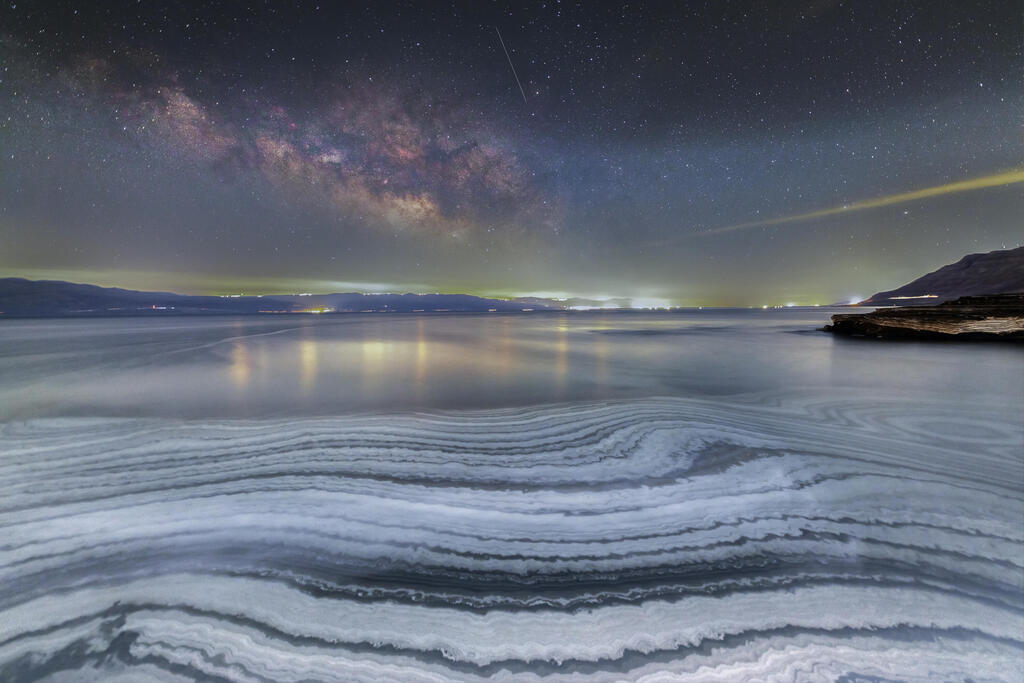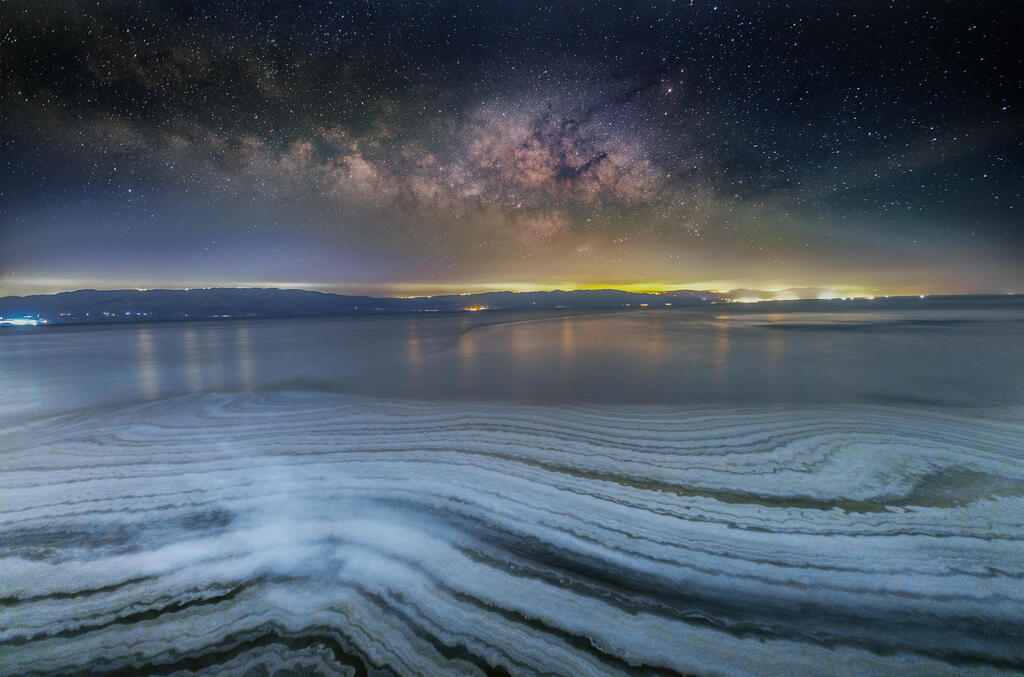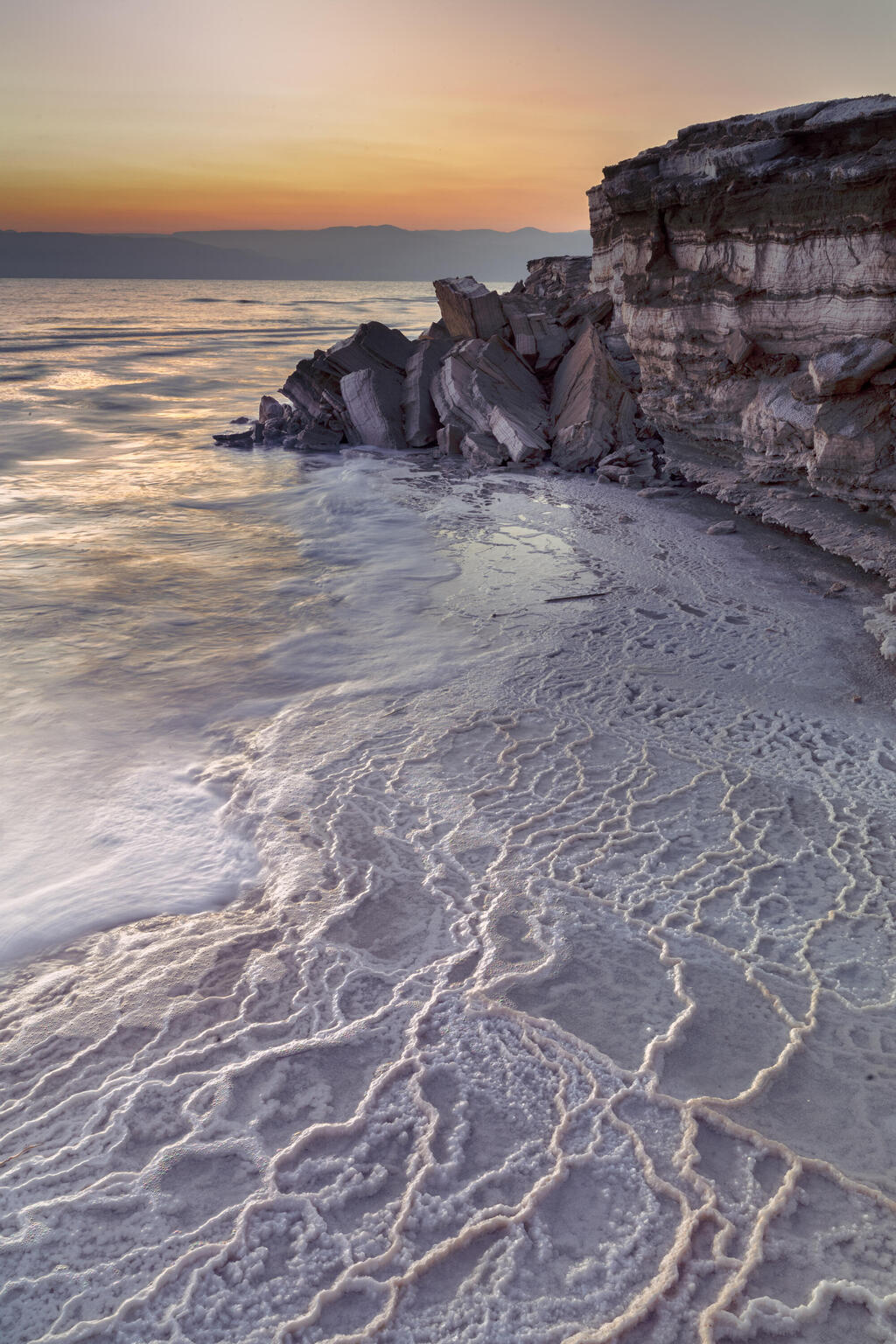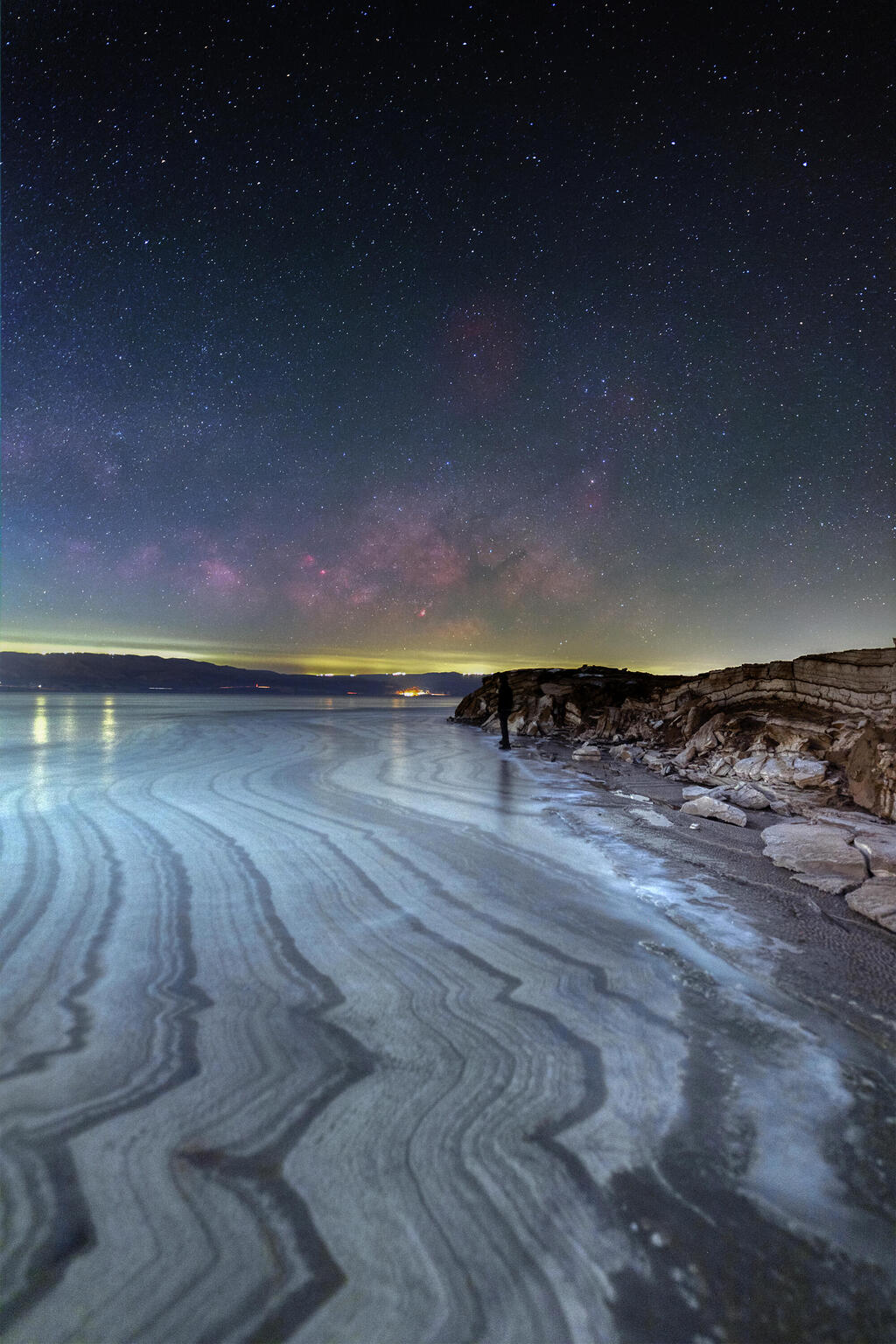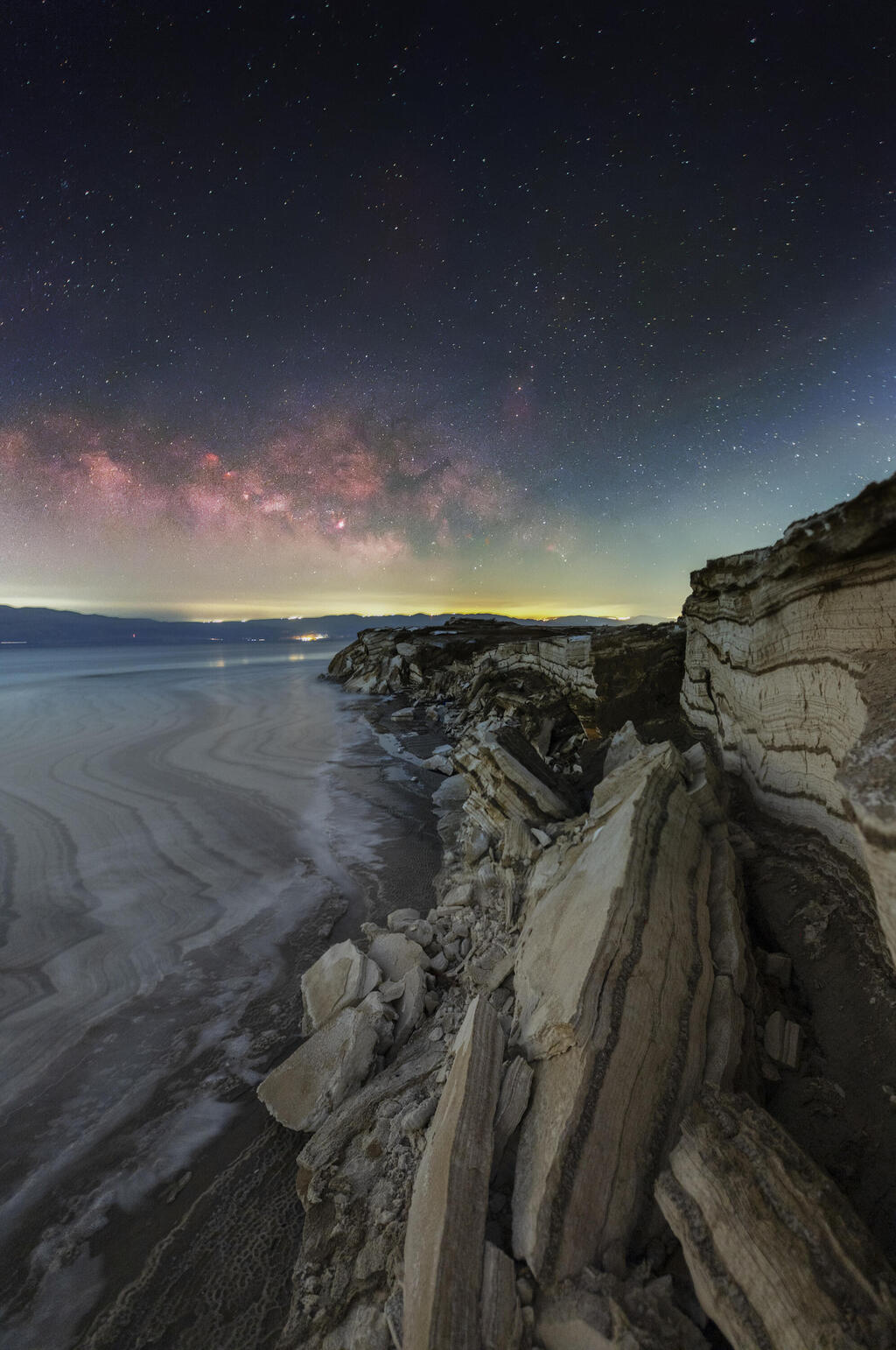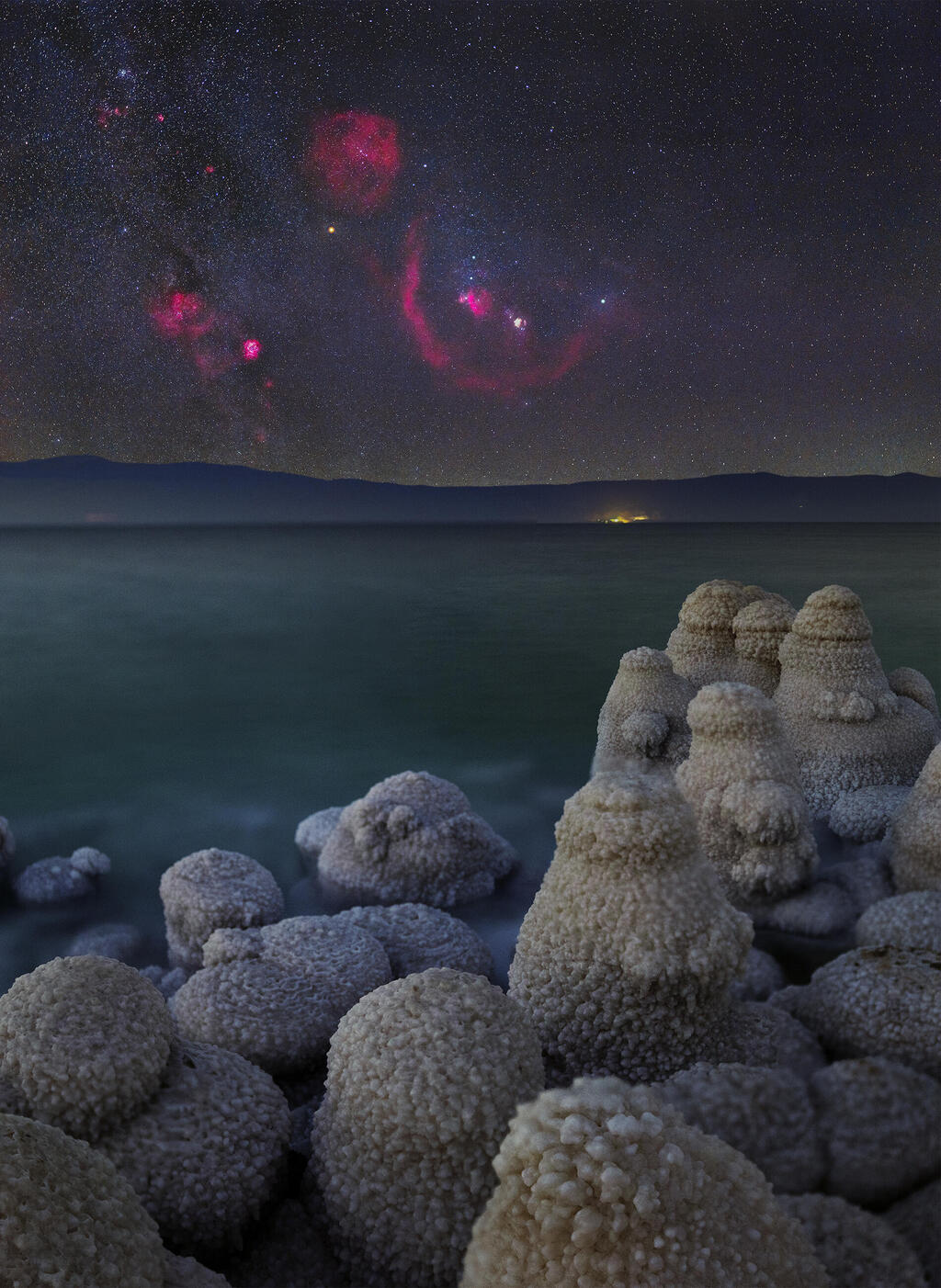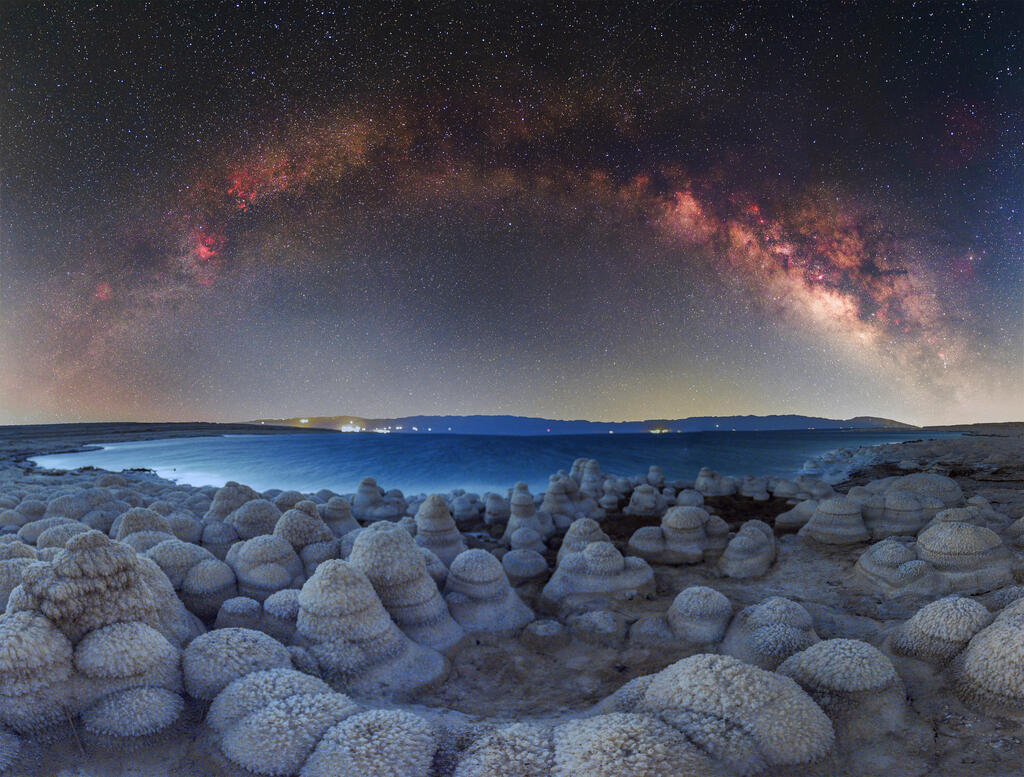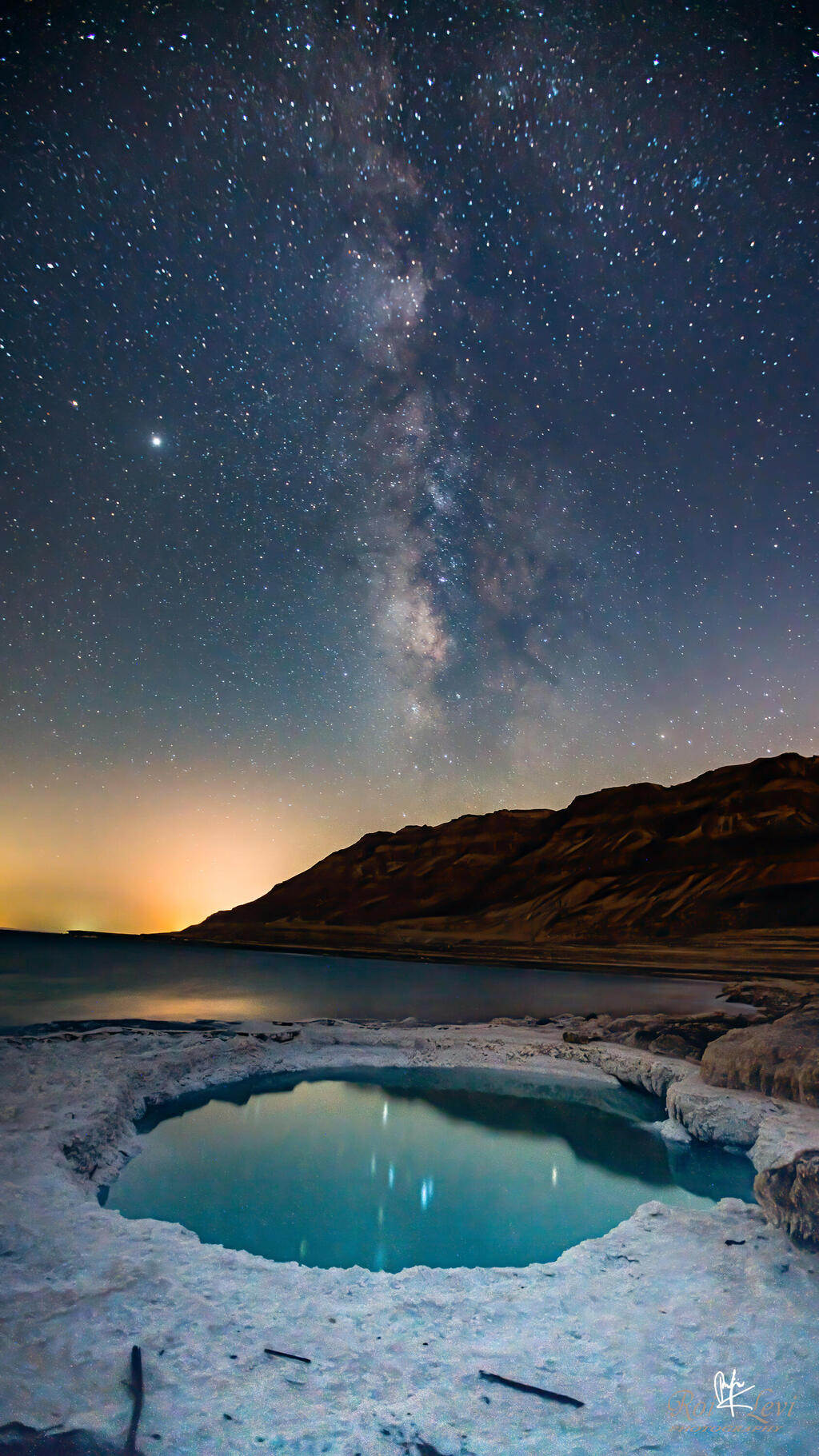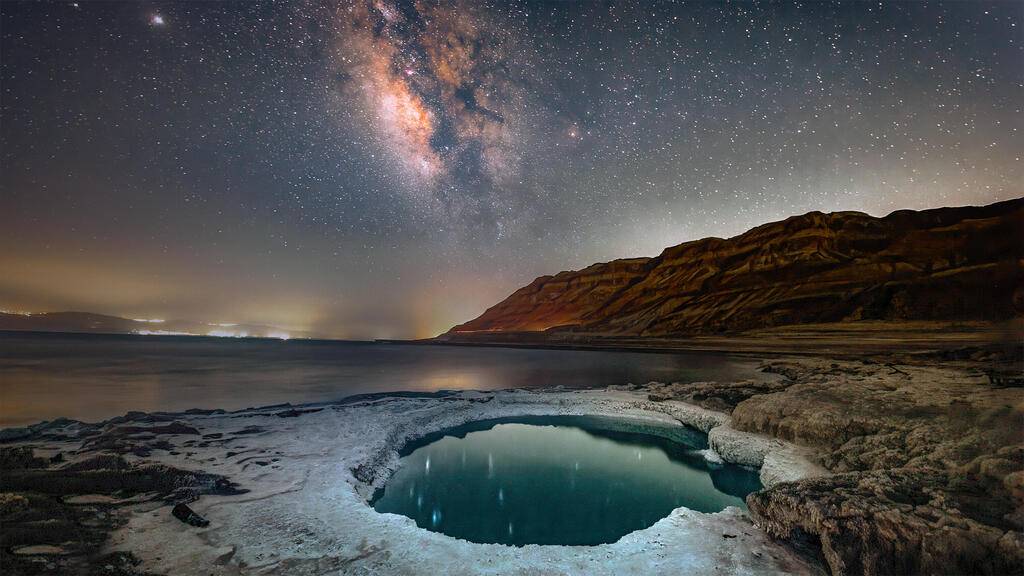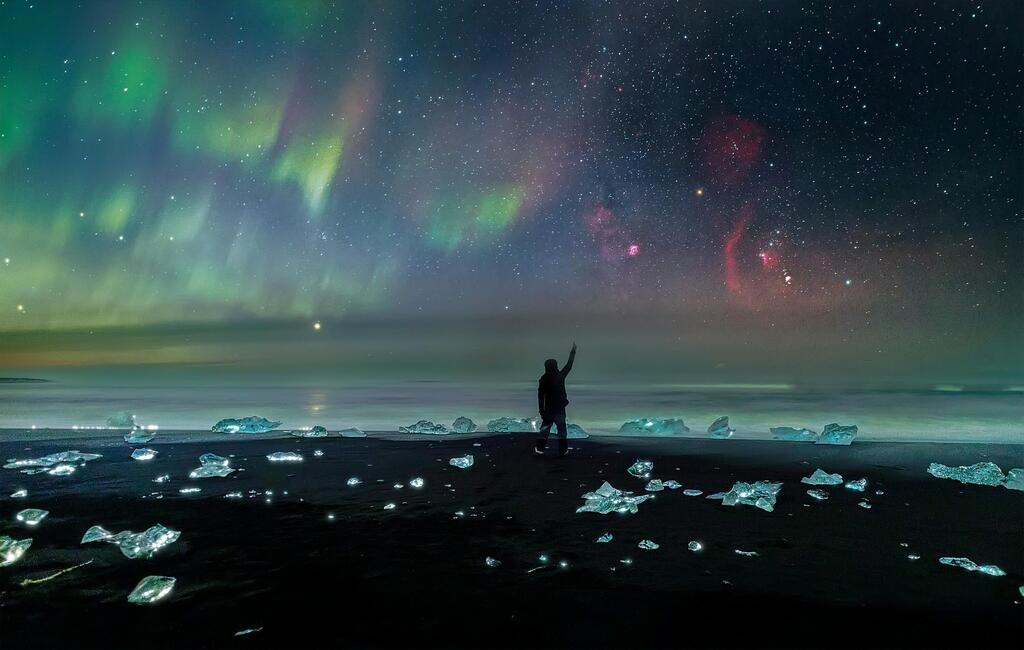Astrophotographer Roi Levi recently descended to the Dead Sea, returning with stunning shots of the Milky Way and the wild landscape from the lowest point on Earth.
Read more:
Speaking with Ynet, he explained that we are currently in the best period for photographing the Milky Way from Israel, but it requires time, dedication and hoping for a cloudless sky.
"I went down to the Dead Sea to a newly exposed beach due to the continuing drop in water level," he shared. "I use Google Earth to find locations and check for changes in the terrain, or I get information about a new secret spot that photographers pass to each other from mouth to ear."
To capture this set of images, Levi arrived in the middle of the night at a location surrounded by patterns of salt waves. "We are now at the beginning of the Milky Way season in Israel, which lasts from February to September," he explained.
The Milky Way is the name of the galaxy that also contains Earth. It is essentially a massive cluster of stars, among them clouds of gas and interstellar dust, visible in the Earth's sky as a bright band stretching from horizon to horizon.
"The core of the Milky Way, which is the reddish part in the center of the band, shines before sunrise, around 03:00 AM, and that's also the best time to photograph it during these months. As the season progresses, the core appears earlier and remains visible for longer until daylight emerges," he said.
"The prevalent assumption that the Milky Way can only be photographed in the summer, during July-August, is incorrect. It's possible to photograph the Milky Way all year round, with its core visible from February to September. Thus, each month offers the chance to capture stunning images of the galaxy, under a star-filled night, when the moon is small and does not hinder visibility.
"I was fortunate to photograph the images on a cloudless night with good visibility, in a new location that had not yet been photographed with the Milky Way. I guide groups and teach star photography in Iceland and the United States, and finally, due to the war, I have time to explore more of the country.
“I'm planning a star photography workshop at the Dead Sea with Erlich, as I'm always looking for new and unique locations to photograph the stars from."
The following images were captured by Levi on earlier trips to the Dead Sea during the past winter and spring:
About two months ago, Ynet spoke with Levi after he returned from one of those photography trips to Iceland, with a gallery of photos that impressed us.
In that conversation, Levi explained to us why the year 2024 will be the best in a decade to enjoy the Northern Lights worldwide. "We are currently in the tenth year of the solar maximum, and scientists believe this phenomenon will continue throughout 2024. Next year, we'll witness the most intense solar activity of the past decade, making it the best year in a decade to observe the phenomenon, which will be the most beautiful, intense, and colorful."
Roi Levi, an astrophotographer with an international reputation, leads a Facebook group of astrophotography enthusiasts, where he updates about solar activities and the photography tours he organizes. For more stunning photographs, you are invited to follow his Instagram account. Additionally, an exhibition of his photographs is still on display at the Dead Sea Mall.


